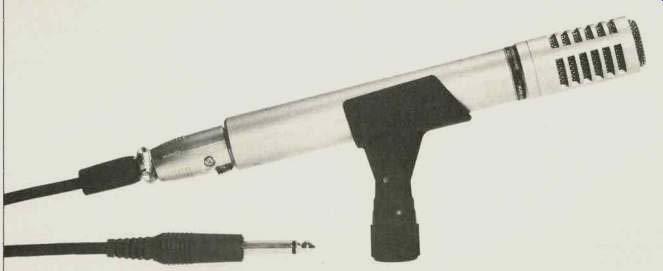
Manufacturer's Specifications:
Frequency Response: 20 Hz to 20 kHz.
Impedance: 600 ohms.
Sensitivity: -72 dB (0 dB = 1 V/ microbar, 1 kHz).
Maximum Input SPL: 130 dB with AA cell; with PX 28 cells, more than 140 dB.
Directional Pattern: Cardioid.
S/N Ratio: Greater than 45 dB.
Operating Voltage: 1 to 12 V.
Battery: One AA penlight cell, more than 3,000 hours continuous life; two PX 28 cells optional.
Connector Type: Detachable XLR.
Cable and Plug: 3/16 in. (5 mm) dia. x 15 ft. (5 m) long cable with 1/4 in. (6.35 mm) plug.
Dimensions: 1 in. (26 mm) dia. x 7 1/4 in. (184 mm) long.
Weight: 4.42 oz. (125 g) with battery.
Supplied Accessories: Microphone holder, windscreen, leatherette case.
Price: $49.95.
Company Address: Radio Shack, One Tandy Center, Fort Worth, Tex. 76102.
The Realistic 33-1080 microphone is intended for use with consumer tape recorders or sound systems. It is self-powered by a built-in AA cell, and the cable supplied has a 1/4-inch phone plug which fits most consumer tape recorders. However, by using cables with 3-pin connectors (Switchcraft A3M/F), a balanced output is obtained so that the microphone can be used with professional-type mixers and recorders. The nickel-finished microphone head and handle are all metal and appear to be machined (rather than cast), making the appearance comparable to that of high grade professional condenser microphones.
An unusual feature is the lack of a power switch. The battery life (with an AA cell) is rated at 3,000 hours, so if the microphone is used regularly, the battery may be left in the mike. The manufacturer recommends that the battery be removed if the microphone is to be idle for a few weeks or months. The absence of a switch would appear to improve reliability by eliminating the possibility of switch troubles, but this is not so because a low-cut "M-V" (Music-Voice) equalizer switch is included. It is hidden, but accessible by unscrewing the barrel, which also gives access to the battery. The "M-V" switch is intended to eliminate proximity effect or boominess when the mike is used for close-up speech. This is a desirable feature, but as received, the switch was noisy and had to be cleaned with contact spray my laboratory tests.
The accessories include a quick-release microphone holder for mounting on standard microphone stands having a 5/8 x 27 thread and a foam windscreen. The windscreen includes a plastic frame which supports the foam. This is a small but well-thought-out detail. By using a frame to space the foam from the microphone, thinner material can be used, and effective pop and wind protection obtained with less roll-off of extreme high frequencies.
Measurements
I would like to remind the reader that the measurements were conducted in accordance with my articles on microphone testing in the April 1977 and September 1978 issues of Audio.
All tests were conducted using the AA cell as supplied.
The optional PX-28 batteries were not tried, since the output clipping level with the 1.5-V cell was adequate for my purposes.
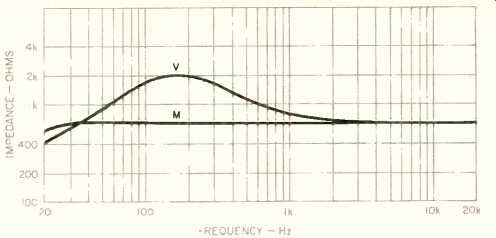
Fig. 1-Impedance vs. frequency for "V" and "M" switch
settings.
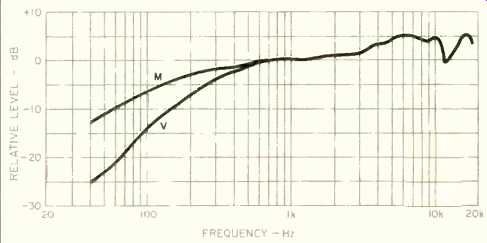
Fig. 2-Frequency response to plane waves, for "V" and "M" settings.
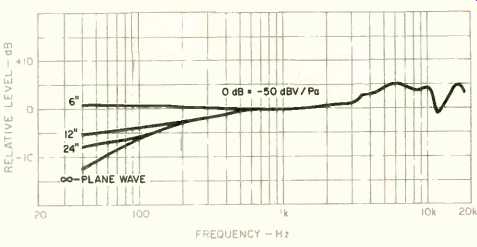
Fig. 3-Frequency response at four distances, with "M" setting.

Fig. 4-Loading loss vs. frequency for 150-ohm preamp.
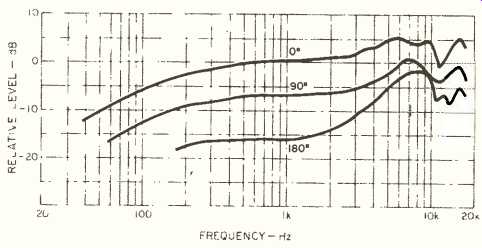
Fig. 5-Frequency response vs. angle for plane wave.
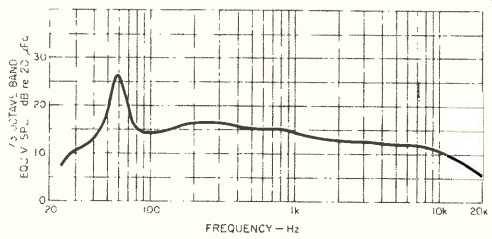
Fig. 6-Noise spectrum (1;3-octave bands), "M" switch setting.
Overall noise levels for 15-kHz bandwidth are 29 dB equivalent SPL (unweighted),
24 dB SPL (A-weighted).
I was dubious, at first, about the maximum audio output obtainable with 1.5-V power, and the first test was to measure the clipping level as seen on an oscilloscope with high level speech input. The clipping level was ±0.5 V, corresponding to an input level of 138 dB SPL (peak) or 135 dB SPL (rms). This is adequate for many of the very loud pop music and vocal applications, and, I think, one would rarely have to use the optional higher voltage batteries. This performance is outstanding, because the SPL limits of self-powered electret microphones (see prior reviews) have been observed to vary from 125 dB with 1.5 V to 135 dB with 6-V d.c. power.
The EMT 160 polarity tester showed standard phasing of the output (pin #2 positive with positive sound pressure).
Being wary of strange output circuit configurations some times found in remotely powered electret microphones, I checked d.c. resistance from each output pin to ground (pin #1). It was in the giga-ohm range, with no indication of substantial capacitance to ground. Thus, the output is well isolated from the ground by an integral transformer, and therefore the microphone can be used with balanced or unbalanced (one line grounded) audio inputs. Unbalanced microphone circuits are subject to radio frequency interference, but the cable supplied is short enough so that r.f.i. should rarely be encountered. If a longer cable is required, a standard microphone cable with 3-pin plugs should be used, and a balanced input transformer provided at the recorder or mixer input.
The impedance curves are shown in Fig. 1. The value with the "M" switch setting is nominally 600ohms, similar to most other microphones manufactured in Japan. This could result in slightly higher noise levels and frequency response variations, due to loading by audio equipment which is designed for 150/200-ohm microphones. In practice, I have found that 600-ohm microphones can be used with most 150/200-ohm inputs with impunity. Most audiophile recorders will perform well with microphones of 150 to 600 ohm impedance, but I recently discovered a late model open-reel machine which gave poor S/N with 150-ohm microphones, and line trans formers were needed to increase the microphone impedance to about 2.5 kilohms to suit the recorder specifications.
Note in Fig. 4 that with the "M" setting there was negligible frequency response variation due to loading by the "150-ohm" input of my broadcast-grade preamp, but with the "V" setting, there was significant loss of bass response.
However, this loading effect served in a positive fashion to reduce boominess with close talking.
This shows that the audiophile should ensure either that his microphone's impedance falls within the specified impedance range of the mixer or recorder or, if not, that a proper line-matching transformer is used.
Figure 2 shows the measured frequency response with a distant source of sound (plane wave). For plane waves, a response rating of 60 Hz to 18 kHz seems to be more appropriate with the "M" setting. The bass roll-off on the "V" setting seems to be much more drastic than on "M." How ever, the results of previous reviews show that linear bass response to very low frequencies is undesirable for on-location recordings with cardioid microphones because of room noise or rumble. This is likely to be more of a problem with audiophile recordings made under adverse room acoustics conditions. Plane waves probably do not exist in these circumstances, so the microphone bass response is likely to follow the curves for finite distances to a source (Fig. 3), which are flatter. With voice or a musical instrument at 6 inches, the microphone has linear response, ±0.5 dB, from 40 Hz to 3 kHz. This is very remarkable performance for a microphone of such relatively low cost. The high frequency response (Figs. 2 and 3) is extremely smooth to 10 kHz. The 3 to 5 dB rise from 1 to 10 kHz is, I think, desirable for audiophile (as well as for professional) applications, adding clarity to vocals and brightness to bass, woodwinds and other instruments.
The directional frequency response curves (Fig. 5) show a pattern which is slightly sharper than a cardioid. The response of a cardioid at 90° is 6 dB below the 0° response, whereas the Realistic microphone response is about 7 dB down throughout the midrange. The 180° response shows greater than 15 dB rejection in the midrange, which is acceptable for a cardioid, and the response is quite uniform with frequency up to 2.5 kHz. Above 2.5 or 3 kHz, the pattern tends towards omnidirectional, probably due to dif fraction effects.
Note that the "sharper-than-cardioid" pattern of the Realistic microphone is similar to that of the Uniaxial ribbon microphone patented by Olson in the '50s. The Uniaxial (RCA BK-5A) was used for many years as a boom mike for television, and served as my reference microphone for subjective comparison tests until recently (Audio, April 1977).
The response curves of the Realistic (Fig. 5) are very close to those of the BK-5A, with the latter on V1 response. This moderate bass roll-off characteristic was found to be desirable in TV to reduce low-frequency noises on the set.
To summarize, the test results of frequency response and directional properties show the Realistic microphone to have performance highly suited to audiophile recording applications, and suitable for many professional audio applications as well. However, the frequency response could be too flat for specific applications in sound reinforcement (PA) or rock music vocals. In these cases, more bass roll-off and/or greater treble rise might be needed.
The output noise spectrum (Fig. 6) shows a 60-Hz peak which was correlated to the power line but was not reduced by changing the orientation of the mike and the soundproof test box. However, this did not greatly influence the overall A-weighted noise level, which measured 24 dB. My calculation of signal-to-noise ratio or dynamic range differs greatly from the specification value of 45 dB (probably based on 1 microbar or 74 dB SPL: 74- 45 = 29 dB noise level).
Subtracting the noise level from the clipping level, we obtain a range of 135- 24 = 111 dB, which is outstanding for a microphone in this or any price range for that matter. There fore, from a standpoint of dynamic range, the Realistic microphone should perform excellently with all sorts of tape recorders, with or without noise-reduction circuits.
Use and Listening Tests
The reference comparison microphone for these tests was the Nakamichi CM-700 mike with cardioid capsule. As explained in previous reviews, the reference microphone was selected primarily for its uniform frequency response and directional properties, and not because it is an ideal microphone for applications being discussed.
For the tests involving music, I did not have the opportunity to record a live concert, but had to resort to pickup of full-range orchestral sound reproduced from my archive of live concert master tapes in my studio. A controlled laboratory test with recorded music can often yield better results than a field recording made under adverse acoustical conditions.
To test noise rejection, I turned on an air conditioner to add some noise to the otherwise quiet studio.
The Realistic microphone, while picking up both speech at more than one foot and music from a greater distance, showed much greater rejection of room noise and sounded a little brighter and more crisp than the reference. For this test, the Realistic was set at "M" and the reference at "Flat" response. The Realistic exhibited no noticeable coloration of sound quality from 0° to ±90° off axis, reflecting the very uniform directional responses as measured. When the Realistic and reference microphones were set on "V" and "Lo Cut" respectively, and spoken into at about 6 inches, the Realistic had a slightly brighter, cleaner sound (more highs) and just a little more bass. Both microphones showed good rejection of room noise with these settings.
The Realistic had 5 to 10 dB greater pickup of 60-Hz magnetic fields (hum pickup) than the reference, when set on "M" and "Flat" response respectively. It is not surprising that the Realistic (which costs only about one-fourth as much as the Nakamichi) does not have an expensive, shielded transformer. This deficiency will not cause a problem in practice if the user is careful to orient the microphone away from power transformers of amplifiers and other electrical equipment.
The Realistic and the reference were equally immune to "pop" sounds when spoken into at very close range. For this test, the "V" and "Lo-Cut" settings were used respectively, and each microphone was used with its accessory wind screen. Each microphone showed a small degree of "pop" or breath-blast sound. As a second reference, I tried an old RCA 44BX ribbon velocity microphone at close range with the "V" setting. This microphone had absolutely zero sensitivity to "pop" sounds, probably because of its mammoth cloth-lined screens. This shows that windscreen size is the prime factor in determining wind or "pop" sensitivity, and the kind of element (electret condenser, ribbon, or dynamic) is relatively unimportant, as long as each has similar electro acoustic sensitivity.
The Realistic had much less (about-20 dB) sensitivity to vibration or handling noise than the Nakamichi when both were set for maximum low-frequency response. This is a definite plus factor for hand-held vocal use.
As a final check, I tested the Realistic with an unbalanced input circuit versus the balanced circuit that had been used for frequency response measurements. There was no change in audio level or quality between the two circuit conditions, and no change in hum or noise level. Thus, the microphone will probably exhibit the measured performance when used with a wide variety of audio recorders and mixers.
I think that the Realistic 33-1080 microphone has excellent performance at a relatively low cost. The electret element offers performance that is much superior to comparably priced microphones, which generally employ moving-coil transducers.
By spending $150 more, one can buy a microphone that offers more bass response and less magnetic hum pickup, but these features are not needed for many audiophile recording applications. The linear high-frequency response and directional characteristics of the Realistic are equal or superior to the acoustical performance of microphones costing from $100 to $300. The 33-1080 is, in my opinion, a "best buy" for audiophiles, particularly those having cassette recorders of medium or high quality. For professionals who require a large quantity of microphones for a recording setup, the Realistic offers excellent quality while keeping total cost reasonable.
-Jon R. Sank
(Source: Audio magazine, Jul. 1983)
Audio-Technica AT813 Microphone (Sept. 1982)
Microphone SENSITIVITY Ratings (Dec. 1976)
The Compleat Microphone Evaluation (April 1977)
The Compleat Microphone Evaluation--An Update (Sept. 1978)
Miking the PRO Way (Nov. 1977)
A Guide to COINCIDENT MIKES (Nov. 1978)
Build A Microphone Preamp (Feb. 1979)
Realistic Sound Level Meter (Nov. 1978)
= = = =